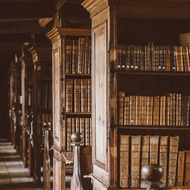
(View Complete Item Description)
"This collection brings together the New York Times Podcast 1619 (Episode 1, "The Fight for a True Democracy") and Smithsonian resources to support my 7th graders as we begin our unit on the American Civil Rights Movement. Later in the unit, the students will read March, a graphic novel based on the experience of former Congressman John Lewis during the Civil Rights Movement. In order for the students to understand why the Civil Rights Movement was necessary, they must first understand the history that led to it. This collection does not, by any means, provide a complete or comprehensive history. The podcast provides an historical overview and will serve as a jumping off point for further research. The visual artwork, poetry, articles, and films included at the end serve to provide additional perspectives and opportunities for exploration. The students will develop their own research questions inspired by the thinking they've done throughout this collection and may use the additional resources provided to begin their independent research. A PowerPoint lesson on developing research questions is included."
Material Type:
Activity/Lab
Authors:
Marissa McCauley,
Smithsonian Education




















